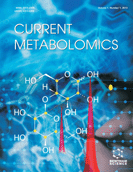Abstract
The presence of elevated glucose concentrations in diabetes is a metabolic change that leads to an increase in the amount of non-enzymatic glycation that occurs for serum proteins. One protein that is affected by this process is the main serum protein, human serum albumin (HSA), which is also an important carrier agent for many drugs and fatty acids in the circulatory system. Sulfonylurea drugs, used to treat type 2 diabetes, are known to have significant binding to HSA. This study employed ultrafiltration and high-performance affinity chromatography to examine the effects of HSA glycation on the interactions of several sulfonylurea drugs (i.e., acetohexamide, tolbutamide and gliclazide) with fatty acids, whose concentrations in serum are also affected by diabetes. Similar overall changes in binding were noted for these drugs with normal HSA or glycated HSA and in the presence of the fatty acids. For most of the tested drugs, the addition of physiological levels of the fatty acids to normal HSA and glycated HSA produced weaker binding. At low fatty acid concentrations, many of these systems followed a direct competition model while others involved a mixed-mode interaction. In some cases, there was a change in the interaction mechanism between normal HSA and glycated HSA, as seen with linoleic acid. Systems with only direct competition also gave notable changes in the affinities of fatty acids at their sites of drug competition when comparing normal HSA and glycated HSA. This research demonstrated the importance of considering how changes in the concentrations and types of metabolites (e.g., in this case, glucose and fatty acids) can alter the function of a protein such as HSA and its ability to interact with drugs or other agents.
Keywords: Diabetes, drug-protein binding, fatty acids, glycation, high-performance affinity chromatography, human serum albumin, sulfonylurea drugs, ultrafiltration
 42
42

















